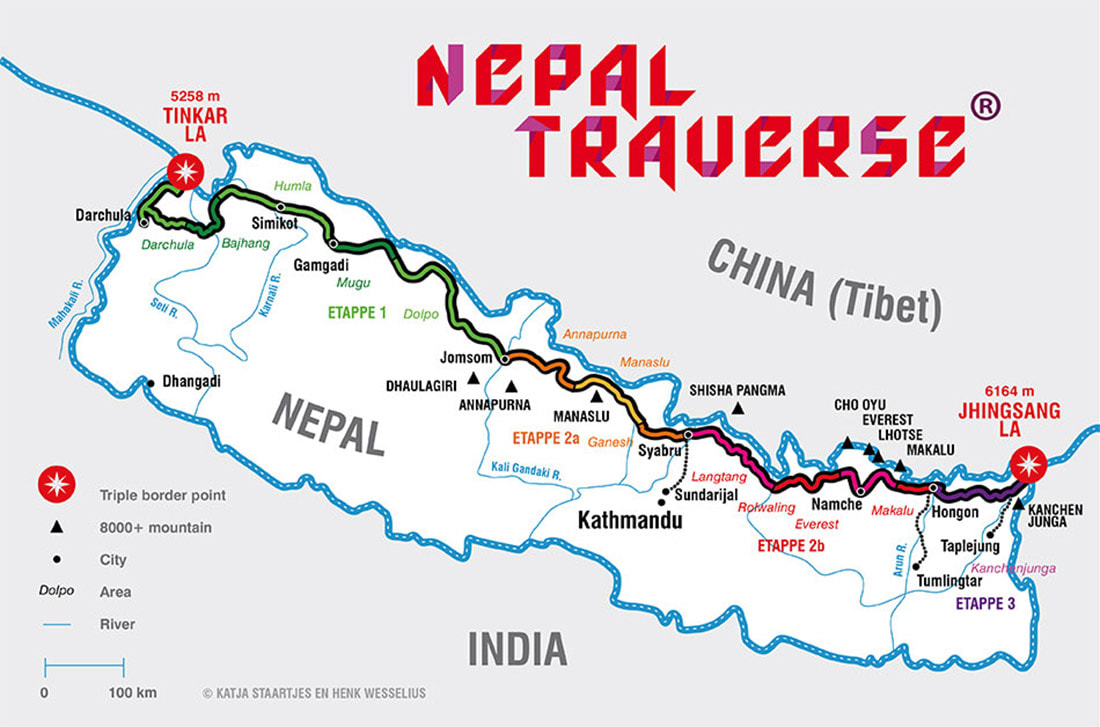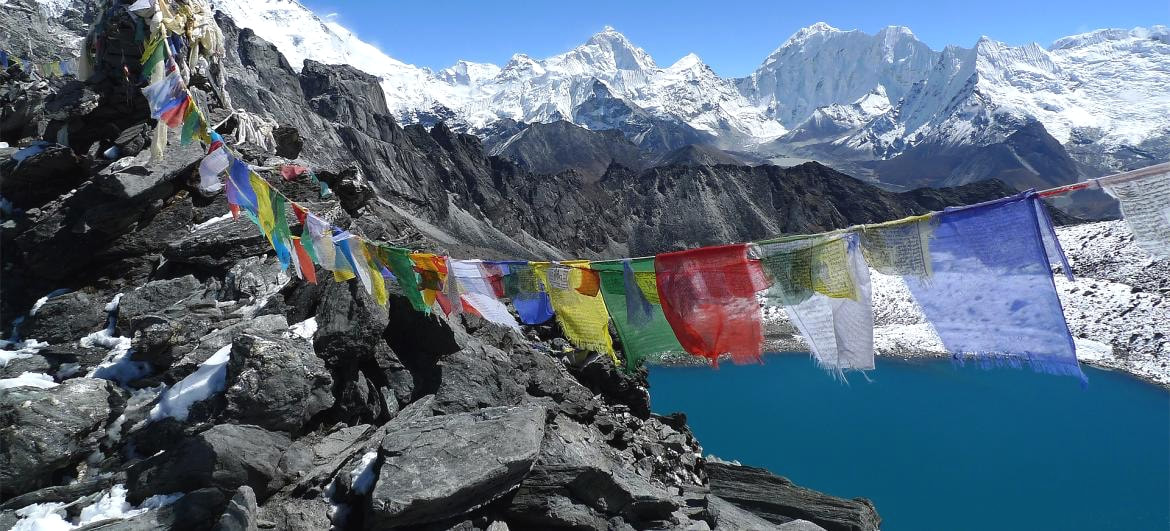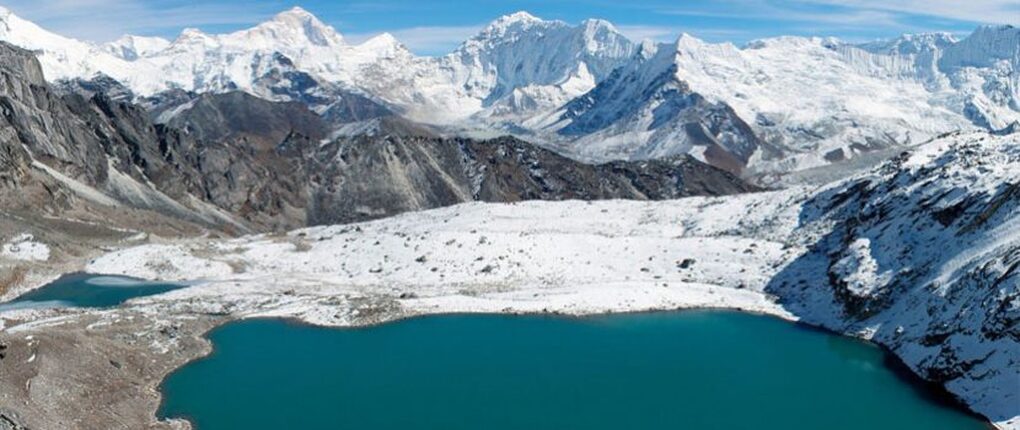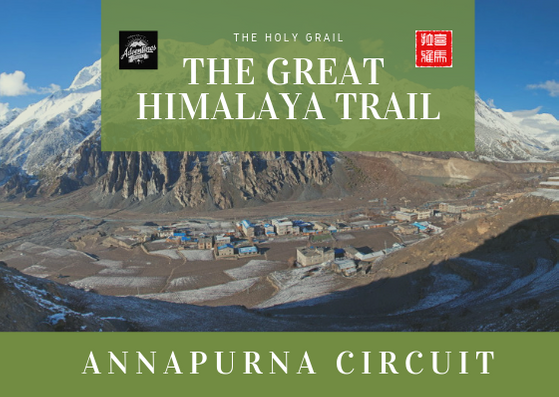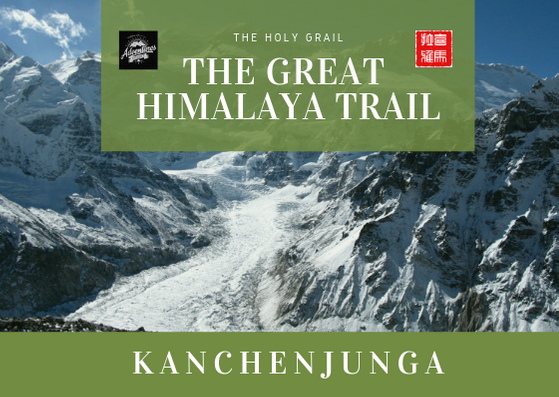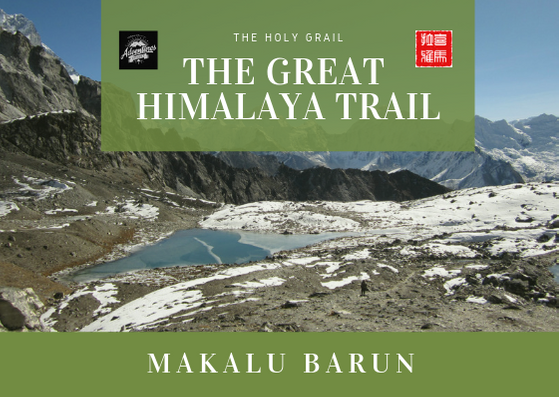WHY THE EVEREST 3 HIGH PASSES TREK SHOULD BE YOUR NEXT BIG HIMALAYAN ADVENTURE!
The Everest 3 High Passes Trek in the Everest region covers some of the region's most remarkable destinations, such as Everest Base Camp, Gokyo Lake, Gokyo Ri, Kalapatthar, Khongmala Pass, Chola Pass, and Renjola Pass.
Therefore, in addition to the standard EBC path, you still have many rewards waiting for you!
This area is a remote and not so accessible road in the Everest region. Of the 30,000 EBC hikers that attempt the journey each year, only 5-10% will choose to pursue the Everest High Passes + Gokyo section of the hike.
There are not many tourists, so enjoy the magnificent scenery!
On this road, you will be surrounded by the four highest mountains in the world, including Mount Everest. And the three summits are each more than 8,000 meters, which is a rare combination in the world!
The Everest 3 High Passes Trek on foot offers more trips than any other route. You can experience many different examples of scenery during this journey. It is the only loop route in the entire Khumbu area. Unlike the classic path of Everest Base Camp, every day will be in a new landscape.
It is the primary area of the Great Himalaya Trail (GHT), the longest and tallest hiking route in the world.
You are surrounded by the highest peaks in the world, from east to west across Nepal, and many surrounding countries. It has a total length of about 4,500 km (GHT is 1,700 km runs through Nepal) and travels through Myanmar, Tibet, Bhutan, Nepal, India, and Pakistan.
The westernmost point of GHT is K2, the ninth-highest peak of the world in Pakistan. Bypassing the source of the sacred Ganga River in India, passing through Nepal's Annapurna, Mount Everest, and the Kanchenjunga Mountains, passing through Darjeeling in India and Sikkim, then Bhutan, Arunachal Pradesh, and India.
Then they travel through Myanmar, finally ending at Namche Barwa in Tibet. Spectacular views include all of the 14 8,000-meter peaks in the world.
As the majority of ordinary travelers, the probability of completing the Great Himalayas is small, but we can complete one or a few of them.
1. Where does the hiking start?
Hiking in the Everest region generally begins in Lukla.
Nepal's Tenzing-Hillary (Tenzen Hillary Airport), also known as Lukla Airport, is located in the Soro Khumbu region of eastern Nepal and is a small airport in the town of Lukla. Known as the "runway on the roof of the world," the airport is located at an altitude of 2,860 meters.
The mountain is at the end of the landing strip, with a 700-meter abyss at the other end. It offers aircraft a runway that is only 475 meters in length.
It is the gateway to the EBC (East of Everest Base Camp) and the Everest Mountain, along with the entire Himalayas. After two or three days of classic EBC trails from Lukla to Nanchi Market, Sanchakou will take you to Thame or Dingboche depending on the route you decide to take.
2. Are there inns along the way?
The Everest 3 High Passes Trek is dotted with mountain teahouses, which is where you can stay every night of your journey if you wish. You can also camp with a team if that is your preference. During the busy season, these inns may become crowded.
3. How many days does it take to complete this route?
Hikers with beginner's hiking experiences can complete this journey in about 3 weeks. Adventures Unlimited offers a 18 days programme. It helps to add an extra 1-2 days to your itinerary to ensure that you have enough time to see everything. This spare time gives you flexibility if you need time because you're not feeling well.
The difficulty level of this walk is generally 4.5 out of 5 stars. This trek is not an easy one. The biggest challenge of the classic Everest Base Camp route is the altitude sickness that can develop.
In the The Everest 3 High Passes Trek, there are some uncommon dangers along the way of which all hikers should be aware. You must pay attention to the changing weather, and be prepared to walk on the melting glaciers or easy-falling hiking trails.
Professional guides or teams can minimize these risks for you.
4. Are there easy ways to manage the journey?
Because of the challenges this journey provides, there are some specific steps you must take to ensure your safety and that of your team.
Follow the appropriate itinerary, including staying on the trail for an adequate amount of time each day. Altitude changes should not exceed 400-500 meters.
Always check the weather forecast.
Choose the right hiking equipment for the trip.
Hard training is definitely before you go and attempt this trek. (See Adventures Unlimited's Training Guarantee). Even regular activities like swimming, yoga, aerobics, and running make your hiking and breathing easier at high altitudes.
|
View from Renjo la pass
|
Kongma la pass
|
|
View from gokyo ri
|
Chola pass
|
5. What is the best time to take this route?
Time is of the utmost importance as the mountain weather can be challenging, and hiking in a perfect season is an essential condition for the successful completion of this walk.
There are two best hiking seasons throughout the year when the weather is considered to be stable and safer. These are also the busiest time to plan your journey.
Walking season is typically September-November or March-May.
During the period from September to November, Nepal, after the monsoon, provides a bright, cloudless sky with spectacular views of the Himalayas from any corner. We recommend going to the Everest 3 High Passes Trek from mid-October to mid-December.
6. Can I walk independently on the Everest 3 High Passes Trek ?
The short answer is: Yes! An independent team without a guide or a husband can take this hiking route together. But on the road to Everest High Passes, you will find that few people hike without local guidance. It's all because of the changing weather conditions and the glaciers that move through the route.
That means that if you are unfamiliar with the route, there is a possibility of getting lost.
The route between Chukung and Lobuche in the pass to the "First Pass: Kongma La" is considered dangerous. It is reported that the glacier in the area moves faster than usual. We suggest that if you travel alone, then be sure to Collect as much information as possible from locals before the first pass. Don't forget to bring your own GPS device and follow the displayed track.
7. Hiking the Everest 3 High Passes Trek
Food options on the way may be much more abundant than you may anticipate, at least on the EBC Classic Walking Route. Even pizza is available in some locations.
Water should be something you keep in your body abundantly at Everest High Passes + Gokyo. Your body will continuously and desperately need fluids to resist altitude sickness, stop dehydration, and digest the foods you eat.
Some foreign hikers will carry a water purifier such as SteriPEN and drink purified tap water. You can purchase hot water and replenish ordinary drinking water while hiking. Bring a thermos cup and a reusable water bottle to prevent plastic pollution.
In the foothills of the Himalayas, you will also find wireless networks. Once you pass the South Pool, it is difficult to have data access. Some inns will sell the "EVEREST LINK" Wi-Fi network card. These cards are sold in different denominations, the most expensive being about $10 for 24-hour access. These cards may not always be easy to use.
Many inns turn off electricity after some time, which means there is no Wi-Fi. Be sure to ask about these times in advance. If you have a SIM card in Kathmandu, you can receive signals in many places.
There are also ATMs in the Everest area. There is usually one in Lukla, and there are two more in the Nanchi market. No one can guarantee that they work correctly, so the recommendation is to take cash from Kathmandu to avoid headaches.
95% of the places along this trip will not accept bank cards. If the ATM does not work, Lukla and Nanchi have locations that provide cash advances from a credit card. Some stores in Nanchi accept bank cards, but after that, few places will take anything other than cash. You will want to make sure you have enough money to return.
Why choose the Everest 3 High Passes Trek even with its challenges?
The answer to that question is simple: you have the opportunity to experience a life-changing adventure.
Food options on the way may be much more abundant than you may anticipate, at least on the EBC Classic Walking Route. Even pizza is available in some locations.
Water should be something you keep in your body abundantly at Everest High Passes + Gokyo. Your body will continuously and desperately need fluids to resist altitude sickness, stop dehydration, and digest the foods you eat.
Some foreign hikers will carry a water purifier such as SteriPEN and drink purified tap water. You can purchase hot water and replenish ordinary drinking water while hiking. Bring a thermos cup and a reusable water bottle to prevent plastic pollution.
In the foothills of the Himalayas, you will also find wireless networks. Once you pass the South Pool, it is difficult to have data access. Some inns will sell the "EVEREST LINK" Wi-Fi network card. These cards are sold in different denominations, the most expensive being about $10 for 24-hour access. These cards may not always be easy to use.
Many inns turn off electricity after some time, which means there is no Wi-Fi. Be sure to ask about these times in advance. If you have a SIM card in Kathmandu, you can receive signals in many places.
There are also ATMs in the Everest area. There is usually one in Lukla, and there are two more in the Nanchi market. No one can guarantee that they work correctly, so the recommendation is to take cash from Kathmandu to avoid headaches.
95% of the places along this trip will not accept bank cards. If the ATM does not work, Lukla and Nanchi have locations that provide cash advances from a credit card. Some stores in Nanchi accept bank cards, but after that, few places will take anything other than cash. You will want to make sure you have enough money to return.
Why choose the Everest 3 High Passes Trek even with its challenges?
The answer to that question is simple: you have the opportunity to experience a life-changing adventure.
TREK THE GREAT HIMALAYA TRAIL WITH ADVENTURES UNLIMITED!
The Himalayas are one of the most impressive, magical, and daunting places our planet has to offer. One of the most impressive ways to enjoy the vistas offered by these massive monoliths is the Great Himalaya Trail [GHT]. It offers opportunities for trekkers and hikers who wish to challenge themselves. The high route requires some degree of mountaineering, while the low route allows the opportunity to travel from village to village, enjoying Nepalese culture. Either way, the adventurer has a unique opportunity to explore the world and themselves on the GHT – whether they spend a few days there or a few months.
One of the most beautiful and popular Great Himalaya Trail is the Everest High Passes Trek. What stands out about this part of the GHT is it’s ever evolving landscapes. In some areas, it is dark and luscious – fed by the monsoonal rains. In other areas, you receive the arid starkness of an arctic biome that is surprisingly inviting to the soul.
|
HIGHLIGHTS
|
WHY YOU SHOULDN'T GIVE THIS TRIP A MISS?
|
DATES
EVEREST 3 HIGH PASS TREK 24 April to 11 May 2020
EVEREST 3 HIGH PASS TREK 24 APRIL TO 11 MAY 2020
- April 24 Day 1: Arrival at Tribhuvan International Airport. (1350m) and transfer to Hotel.
- April 25 Day 2: Kathmandu (1,300m) to Lukla(2,84om) to Phakding(2,610m); 8 km, 3-4hrs trek.
- April 26 Day 3: Phakding- Namche (3440 m); 11km, 6-7hrs trek.
- April 27 Day 4: Acclimatization and Exploration day.
- April 28 Day 5: Namche toDebuche(3,870m); 9km, 6-7hrs trek.
- April 29 Day6 :Tengboche to Dingboche(4,410m); 8km, 6-7hrs trek.
- April 30 Day 7: Dingboche acclimatization day
- May 1 Day 8 Dingboche to Chhukung (4,730m); 4km, 2-3hrs trek.
- May 2 Day 9: Chhukung to Knogma La (5,535m) to Lobuche(4,910m); 13km, 9-10hrs trek.
- May 3 Day 10: Lobuche – Gorakshep(5,160m) - Everest Base Camp (5,364m) – Gorakshep: 12km, 8-9hrs trek.
- May 4 Day 11: Trek from Gorakshep–Kalapatthar(5,550m and Gorakshep – Dzonglha(4,830m); 13km, 6-7hrs trek.
- May 5 Day 12: Dzongla to Cho La Pass (5,420m) to Thangnak(4,700m) to Gokyo (4,800m); 13km, 9 -10hrs trek.
- May 6 Day 13: Acclimatization and exploration day at Gokyo valley. Hike toGokyo Ri.
- May 7 Day 14: Gokyo to Renjo La (5,345m)toMarulung(4,210m); 13km, 8-9hrs trek.
- May 8 Day 15: Murlung to Namche(3,440m); 13km, 7-8hrs trek.
- May 9 Day 16: Namche to Lukla(2,840m)); 19km, 8-9hrs trek.
- May 10 Day 17: Lukla to Kathmandu by flight(30minutes flight)
- May 11 Day 18: Final Departure
LAND COST:
EVEREST 3 HIGH PASS TREK 24 APRIL TO 11 MAY 2020
Cost: USD 1,550/person
Max Size: 20 excluding host
1) Early Bird (Deposit made by 1 November 2019): $75SGD off or receive Adventures Unlimited's Limited-Edition down jacket worth $125SGD
2) Group Signup (2 participants and above): $75SGD off or receive Adventures Unlimited's Limited-Edition down jacket worth $125SGD
(Promotions above are non-stackable.)
SGD 500 deposit will be collected to confirm your slot.
Balance to be made latest by February 2020.
What does your package include?
- Airport Transfer (For group arrival and departure)
- Kathmandu - Lukla Flight
- Twin/triple sharing accommodation
- All meals (B/L/D) during trek
- Water purification tabs
- English speaking guides (including lead and sweeper) and porters
- Free Rental of sleeping bag and trekking duffel bag (To be returned at the end of the trek)
- Comprehensive medical kit
- Trekking permit and Trekkers’ Information Management Systems (TIMS) Card
Package Excludes
- International Flights
- Personal travel insurance
- Bottled or boiled water
- Gratuities/Tips
- Personal expenses
- Laundry
- Visa entry if required
- Anything else not mentioned in inclusion list.
Step 2: Whatapp proof of payment receipt to 91020550 (IMPORTANT: PLEASE INDICATE "APRIL 2020 GHT)
Step 3: Receipt for payment will be issued and further instruction will be provided.
Step 4: Pre trip briefing will be arranged and you will be added into a dedicated whatsapp chat for this trip 2 months before the trip.
Step 5: Balance payment to be made latest by FEBRUARY 2020.
Refund Policy
Deposit (non-refundable)
Until 12 weeks prior to departure – 100% Refund of balance paid
10 weeks prior to departure – 50% Refund of balance paid
8 weeks prior to departure – 0% Refund of balance paid
Recommended flight
Details will be given to confirmed participants.
Others:
1. This event is organised by Adventures Unlimited (TA02844), a licensed travel agent registered with the Singapore Tourism Board.
2. Insurance
From 15 July 2015, a travel agent is required to inform and ask attending participants if it is their wish to purchase travel insurance that includes coverage for business insolvency of travel agencies when:
– they are buying a leisure travel product/package; or
– their travel product/package costs at least S$1,000 (including GST) per person; or
– they are paying a deposit or payment of at least S$500 per person.
|
THIS EVENT IS BACKED BY ADVENTURES UNLIMITED's TRAINING GUARANTEE. We train you to get ready for this trek, or your money back* * Terms and conditions apply Find out more information about our Training guarantee here. |
|
A word about trekking in high altitude places
At Adventures Unlimited, we take our participant's health and safety concerns seriously. Instances of acute mountain sickness (AMS) can affect your heart, lungs, muscles, and sensory system. If one's condition is extreme and he/she has little access to treatment, difficulties can prompt swelling in the cerebrum and lungs, bringing about unconsciousness or even death. Learning to anticipate, minimise and treat AMS when dealt with symptoms is vital in the mountains. At Adventures Unlimited, we bring our medical and monitoring equipments whenever we embark on a trip. We do not soley rely on our foreign partners and operators to supply them. Please click here to read and understand Adventures Unlimited's approach in dealing with acute mountain sickness. |
THE HOLY GRAIL OF TREKKING - THE GREAT HIMALAYA TRAIL
WATCH THIS VIDEO BEFORE YOU LEAVE




